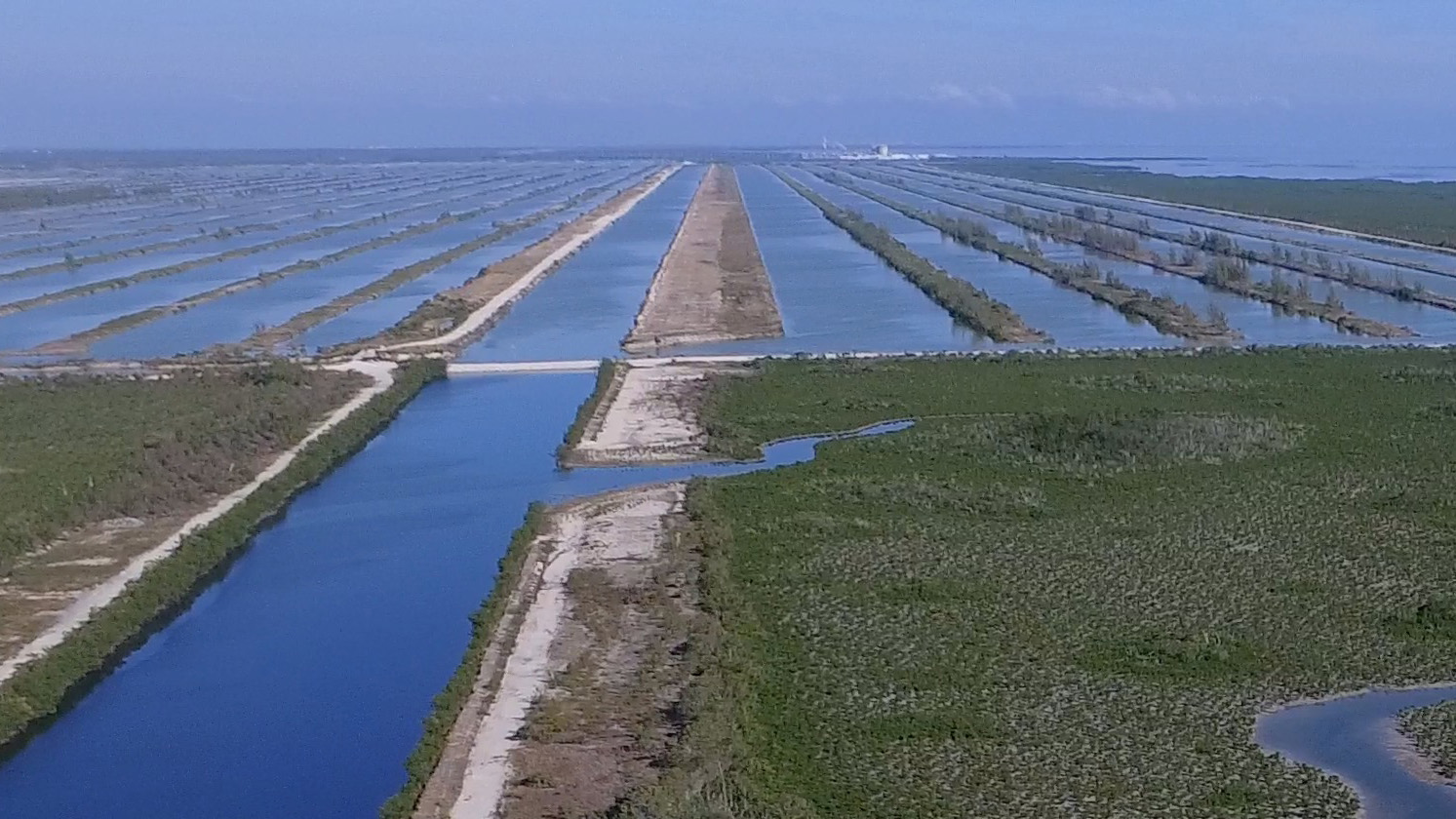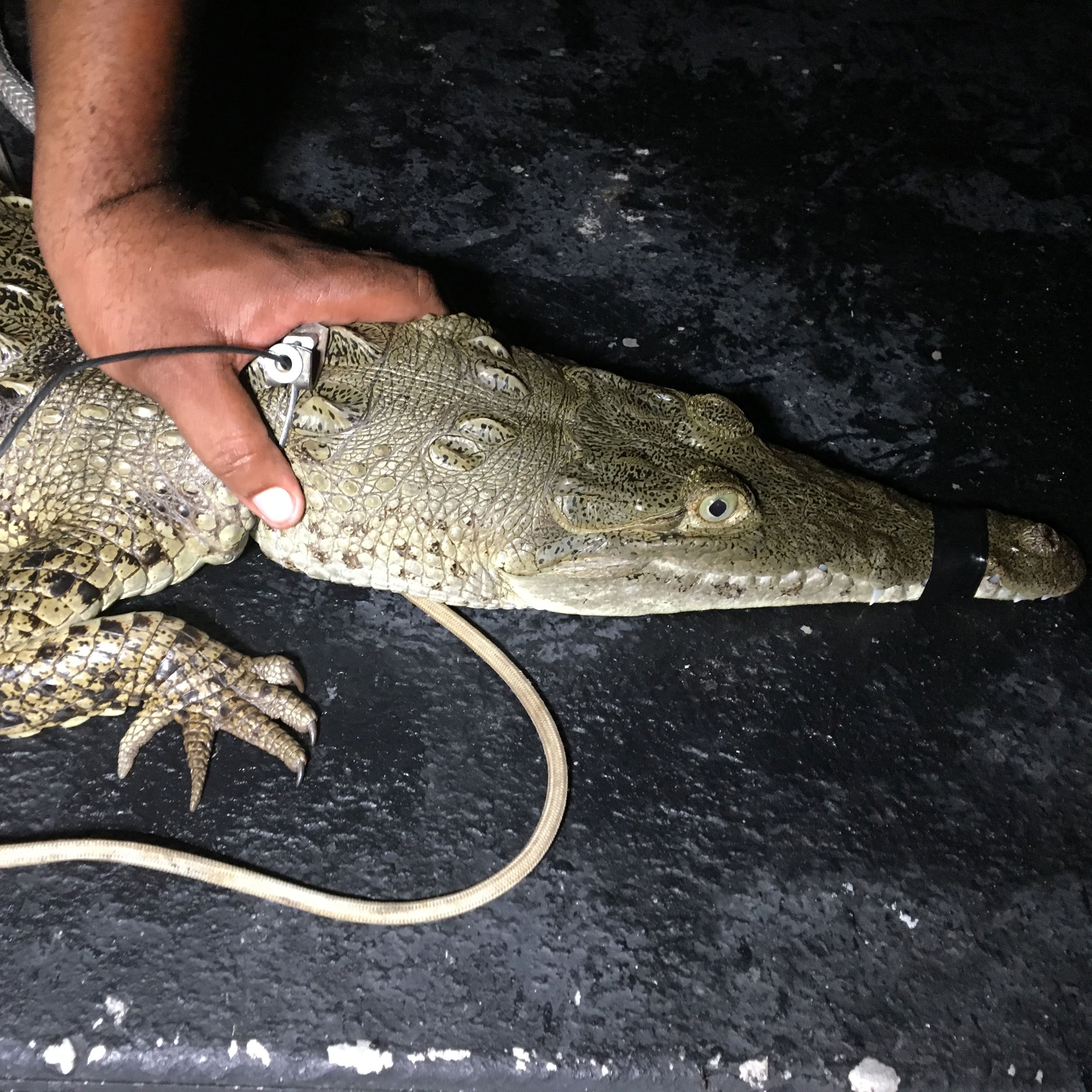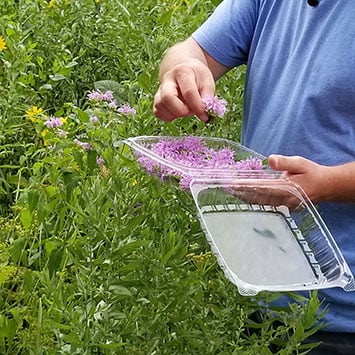If You Build It (a Nuclear Reactor), They (Crocodiles) Will Come | Miami
This nuclear power plant has become a crocodile haven.
Turkey Point Nuclear Generating Station was not designed to be a sanctuary for American crocodiles; it was built to generate electricity for South Florida.
But this massive facility has been credited with helping to save this once-endangered species.
When Florida Power and Light constructed the power plant in the early 1970s, it dug miles of parallel canals to cool the site’s nuclear reactors.
But not long after the plant opened, nesting crocodiles were discovered in the raised edges of the canals. The utility had inadvertently created the perfect crocodile habitat: the saltwater cooling canals were ideal for mature animals, the berms that contained the canals provided perfect nesting sites, and the adjacent freshwater ponds served as a nursery for the hatchlings.
And all of this could be found next to the crocodile’s historic stomping grounds.

“Being right in the middle of Biscayne National Park and Everglades National Park along the bay where they naturally occur is very inviting for crocodiles to come in here,” said Turkey Point “Croc Team” biologist Mike Lloret. “The females come in to nest, the males come in chasing the females, and then any of the offspring that are born here will raise themselves here. We have perfect isolated nesting areas that are disappearing in more natural areas.”
Fortunately for the crocodiles, as fresh water circulates through the closed loop canal system, it never comes in contact with radioactive materials from Turkey Point.
“There are no mutant crocs,” Lloret said. “They have normal growth rates – happy and healthy, normal crocs.”
Because Turkey Point was deemed a critical habitat for a federally protected species by the United States Fish and Wildlife Service, Florida Power and Light was forced to launch a Crocodile Monitoring Program in 1978 and a Crocodile Management Plan in 1983. The utility’s conservation efforts have paid off: in 2007, American crocodiles were upgraded from an endangered species to a threatened species, in part because of the increased numbers at Turkey Point.
When baby crocodiles are born, Mike Lloret and the Turkey Point Croc Team collect the hatchlings, record their data, and then install a microchip before they release the hatchlings into the canal system.
The team also conducts population surveys in the canals via airboat throughout the year. As they pull crocodiles out of the water, the team scans and updates their records and microchips any unmarked crocodiles on the spot.
“We check its body condition and make sure everything is intact,” Lloret said. “All of this info is crucial to better understand the population numbers and the health of the American crocodile here in South Florida.”
Lloret also performs weekly surveys by car along the Interceptor Ditch, a canal that runs on the western edge of the cooling canal system. He keeps a journal handy to record every crocodile he sees. When Lloret spots a large crocodile glistening in the red, setting sun, he suddenly hits the brakes and pauses before he writes.
“This picture right here, I can sit here and watch it for hours; this just never gets old,” Lloret said. “When you go out and clear the land and see the crocs using that land for the babies to hatch, and you go and collect the babies, it’s super rewarding. And besides the fact that I love these animals, we are helping a threatened species here in South Florida. The numbers were brought back up, and now we’re just trying to continue bringing them back up. In every sense of the word, I feel very lucky to be doing this.”
— Sean Keenehan






